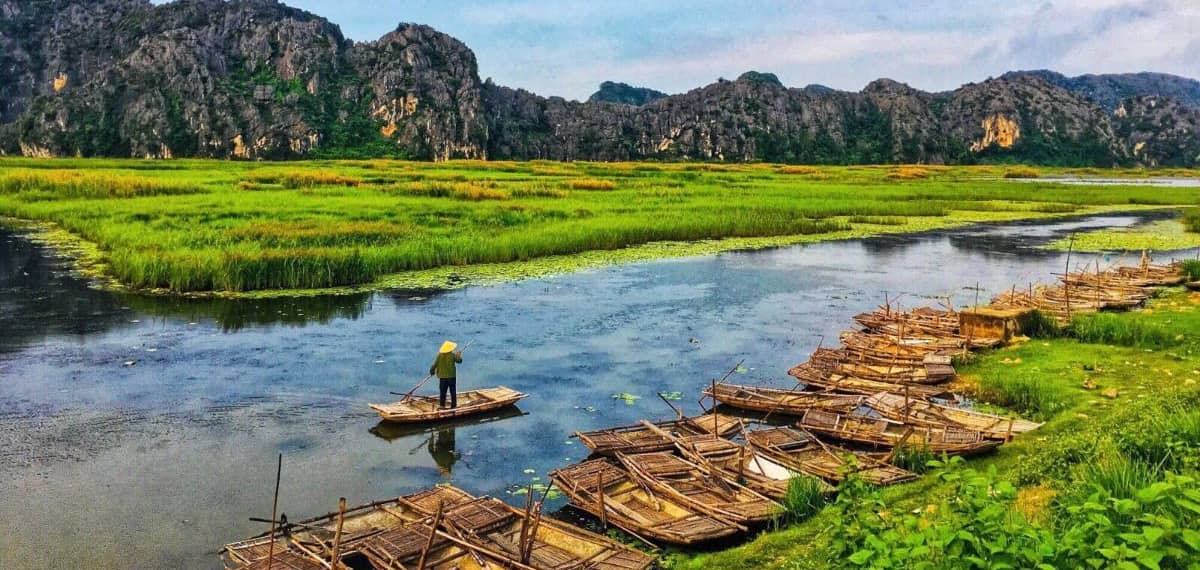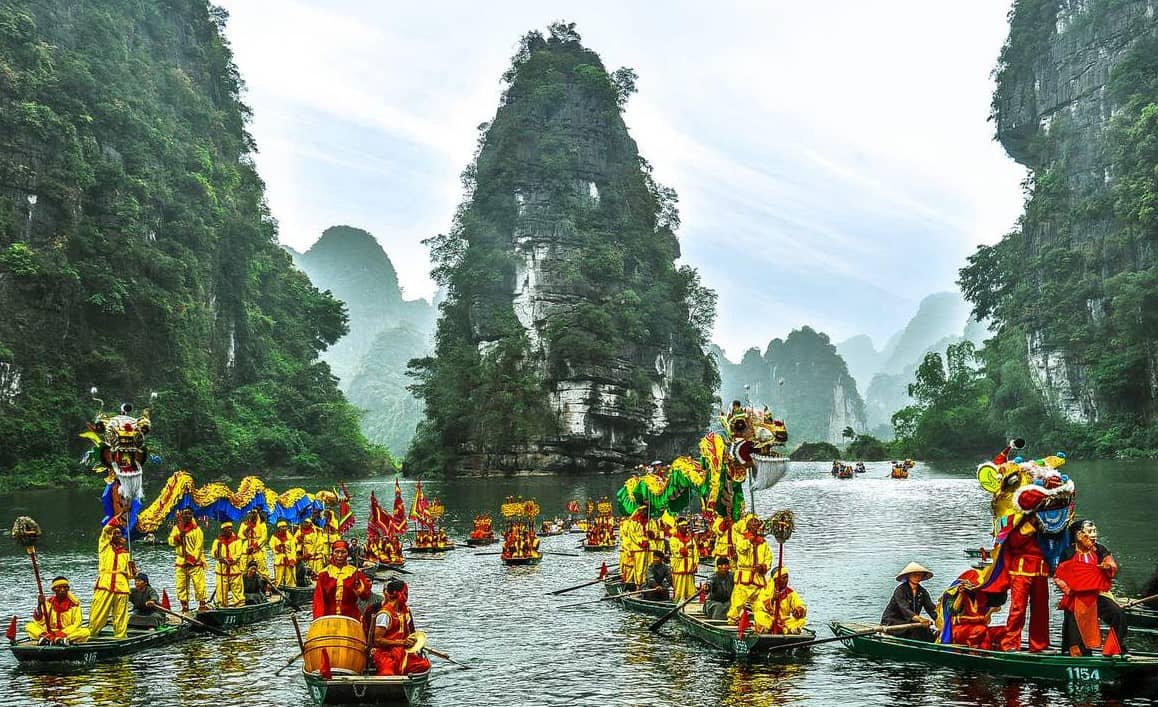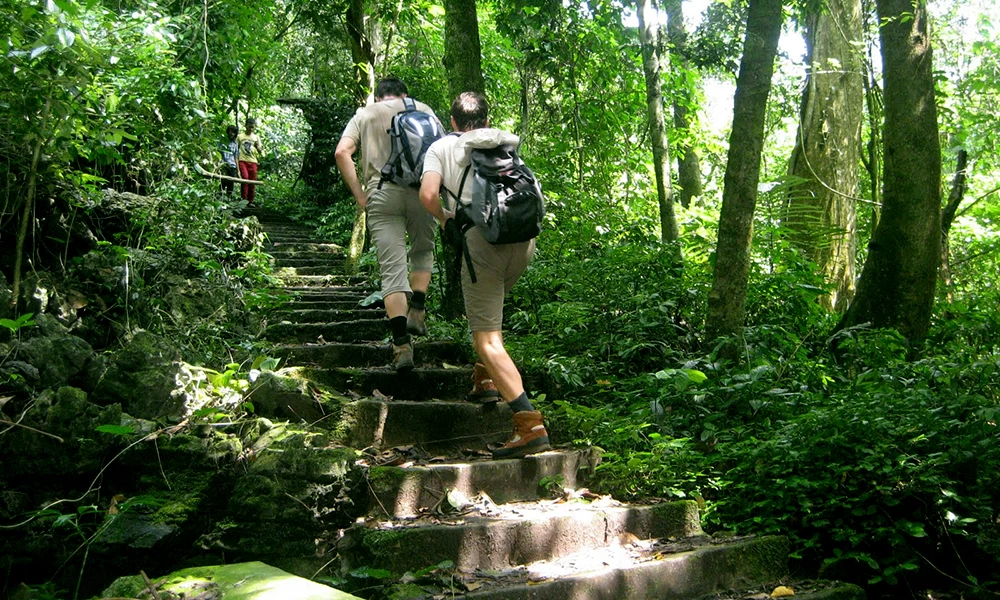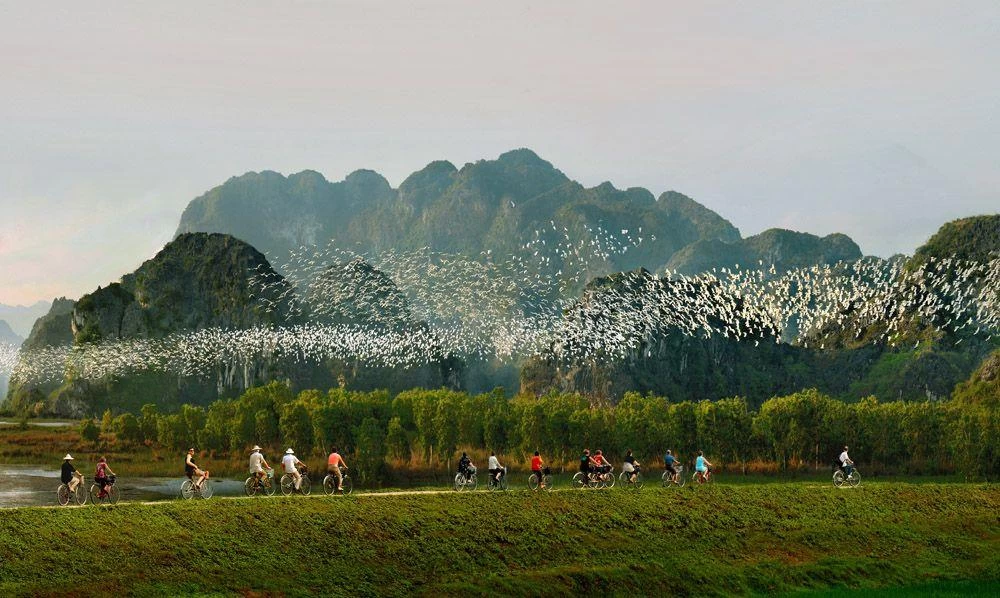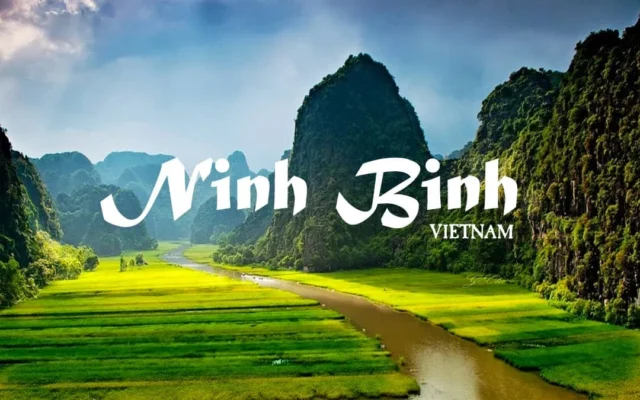
Let’s find out how Ninh Binh’s weather changes through the seasons.
Explore Ninh Binh weather throughout the year with our detailed guide. Learn about seasonal climate patterns, including temperature and humidity for each month. Find out the best times to visit Ninh Binh based on weather conditions, what to pack for different seasons, and how to enjoy local activities regardless of the weather. Whether you’re planning a spring visit or a winter escape, get the essential tips for a memorable trip to Ninh Binh. Let’s follow Ula Travel now!
I. Introduction to Ninh Binh Weather
Ninh Binh is a captivating destination known for its stunning landscapes, cultural heritage, and unique natural beauty. The weather in Ninh Binh plays a crucial role in shaping the experience of travelers who come to explore its picturesque scenery, from the majestic limestone karsts of Tam Coc to the serene waters of Trang An. Understanding the weather patterns in Ninh Binh is essential for planning a trip that maximizes enjoyment and minimizes any potential disruptions.
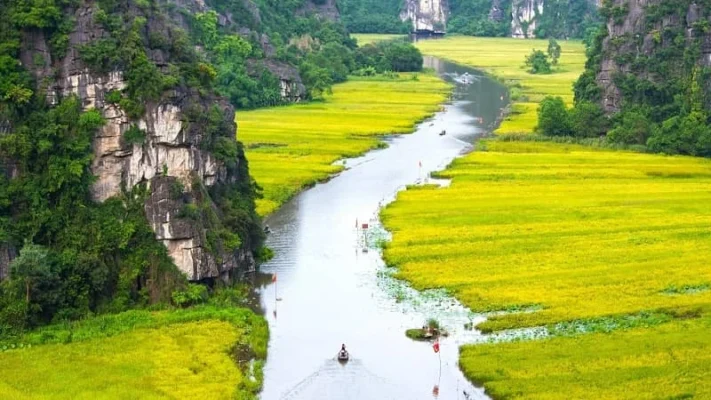
Ninh Binh has four distinct seasons in a year.
Ninh Binh experiences a tropical monsoon climate, which means the region undergoes distinct seasonal changes throughout the year. Each season offers a different perspective on Ninh Binh’s beauty, whether it’s the blooming flowers of spring, the lush greenery of summer, the golden hues of autumn, or the cool breezes of winter. For international tourists, being aware of these weather variations can help in selecting the best time to visit, packing appropriately, and planning activities that align with the climate.
Whether you are looking to hike through the verdant landscapes, take a peaceful boat ride through the winding rivers, or explore ancient temples and pagodas, knowing the weather in Ninh Binh will ensure that your journey is both comfortable and memorable. Therefore, gaining insight into Ninh Binh’s weather not only enhances the travel experience but also allows for better preparation, ensuring that every moment spent in this beautiful part of Vietnam is enjoyable.
II. Ninh Binh Weather by 4 Seasons
1. Spring (February to April)
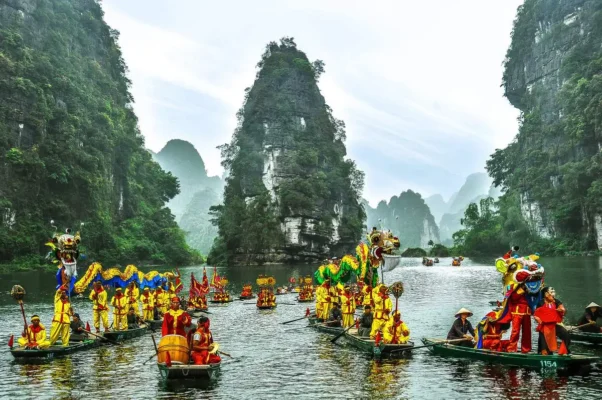
Spring is the time of many big festivals in Ninh Binh.
During spring in Ninh Binh, the weather is characterized by cool temperatures and occasional light rain. The average temperature ranges from 15°C to 25°C (59°F to 77°F), making it one of the most comfortable times of the year to explore the region.
The humidity begins to rise, but it’s still relatively low compared to the summer months. Rain showers are usually brief and gentle, enhancing the freshness of the landscape without causing significant disruptions to travel plans.
Why You Should Visit Ninh Binh in Spring:
- Blooming Flowers and Verdant Scenery: Spring is when nature in Ninh Binh comes to life, with lush greenery and blooming flowers adding vibrant colors to the landscape. The famous Trang An Landscape Complex, a UNESCO World Heritage site, is particularly stunning during this time. The rice pads are a vivid green, and the limestone karsts are covered in fresh vegetation, creating picture-perfect views.
- Festivals and Cultural Experiences: Spring is also a season of festivals in Vietnam, and Ninh Binh is no exception. The annual Hoa Lu Festival, held in March, celebrates the ancient capital of Vietnam with traditional games, performances, and rituals. Participating in these events provides a unique cultural experience, offering insight into the local traditions and history.
What to Pack:
- The weather in spring is mild, with occasional light rains. It’s best to pack light layers, including long-sleeved shirts and a light jacket or sweater for cooler mornings and evenings. Comfortable walking shoes are essential, as this is a great time for outdoor exploration.
Start your journey with Ninh Binh Tour in 2 Days.
2. Summer (May to August)
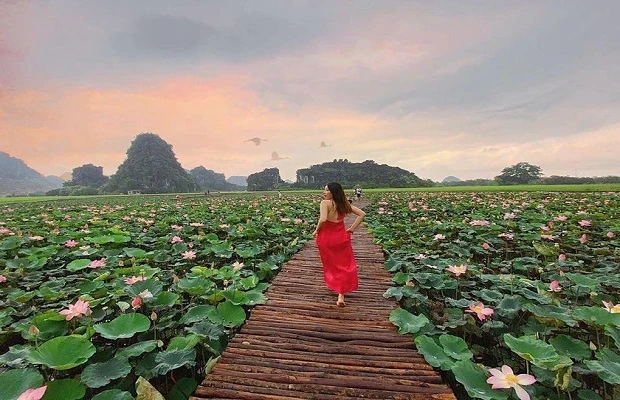
Ninh Binh is brilliant in summer with blooming lotus ponds.
During the summer months, Ninh Binh experiences high temperatures ranging from 28°C to 38°C (82°F to 100°F), with humidity levels often exceeding 80%. The region is also prone to frequent and intense rain showers, which can sometimes lead to brief but heavy downpours or even thunderstorms.
Benefits of Visiting Ninh Binh in Summer:
- Lush Greenery: The heavy rainfall during this season keeps the landscape vibrant and green, making it a beautiful time to explore Ninh Binh’s famous rice fields, caves, and waterways. The lush vegetation is particularly stunning in places like Tam Coc and Trang An, where the scenery is accentuated by the overflowing rivers and flourishing flora.
- Fewer Tourists: Summer is not the peak tourist season in Ninh Binh, so visitors can enjoy a more peaceful experience with less crowded attractions and lower accommodation prices.
What to Pack:
- Summers in Ninh Binh are hot and humid, with frequent rainfall. Pack light, breathable clothing made of natural fabrics like cotton or linen to stay cool. Shorts, t-shirts, and a wide-brimmed hat are recommended for sun protection. Don’t forget to bring a raincoat or poncho and quick-drying clothing for unexpected downpours. Sandals or water-resistant shoes are also a good choice.
Do not miss: Ninh Binh to Halong Bay – Heritage Road Journey 4D3N
3. Autumn (September to November)
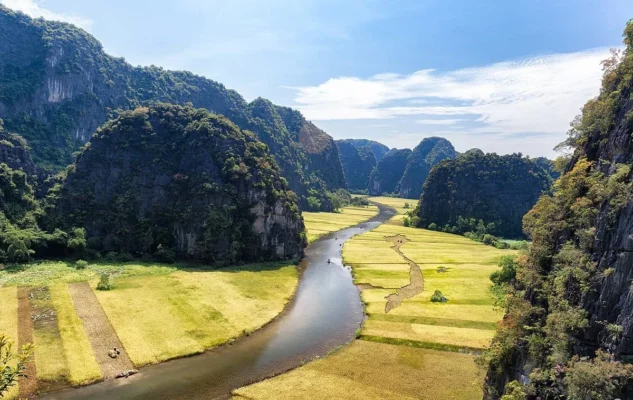
Autumn is harvest time with golden ripe rice fields.
Autumn in Ninh Binh is characterized by mild temperatures, ranging from 18°C to 28°C (64°F to 82°F), and significantly lower humidity compared to summer. Rainfall decreases during this period, resulting in more stable and dry weather, making it a comfortable time for outdoor activities.
Why Autumn is an Ideal Time to Visit Ninh Binh:
- Comfortable Weather: The cooler temperatures and reduced humidity make it ideal for exploring Ninh Binh’s outdoor attractions. Whether you’re cycling through the countryside, taking a boat ride in Tam Coc, or hiking up to Mua Cave, the weather is perfect for enjoying these activities without the discomfort of summer’s heat.
- Stunning Scenery: Autumn is a picturesque season in Ninh Binh. The rice fields transition from green to golden hues, especially in early autumn, offering breathtaking views. The clear skies and gentle breezes also enhance the natural beauty of the region, making it a photographer’s paradise.
What to Pack:
- Autumn brings cooler and more stable weather, making it an ideal time for sightseeing. Light layers, similar to those for spring, are suitable. A light jacket or windbreaker is recommended, especially for early mornings and late evenings. Comfortable walking shoes are a must for exploring the scenic landscapes.
You will be like: Hanoi to Ninh Binh in 3 Days
4. Winter (December to January)
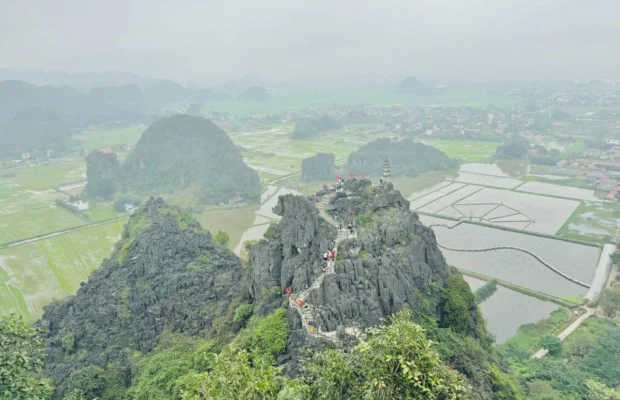
Winter in Ninh Binh has cold and dry weather.
During winter, which spans December to January, Ninh Binh experiences cold and dry weather. The average temperature during this period ranges between 12°C and 18°C (54°F to 64°F), but it can drop lower in the early mornings and late evenings. Humidity levels are relatively low compared to other seasons, contributing to the dry atmosphere.
Attractions and Considerations for Visiting in Winter:
- Scenic Beauty: Winter is an excellent time to visit Ninh Binh if you prefer cooler weather and less humidity. The landscape, particularly the limestone karsts and rice paddies, is often shrouded in a mystical layer of morning mist, creating a serene and picturesque environment.
- Crowds and Atmosphere: Another advantage of visiting Ninh Binh in winter is the lower tourist traffic. Most travelers opt for warmer seasons, so you’ll find that popular sites are less crowded, allowing for a more intimate and relaxed exploration of the region. This is an ideal time for those seeking a peaceful retreat, especially if you enjoy photography, as the diffused light and misty mornings can make for stunning shots.
What to Pack:
- Winters in Ninh Binh can be chilly, especially in the early morning and evening. Pack warm clothing, including sweaters, a thick jacket, and thermal wear. Scarves, gloves, and a hat might also be necessary if you are sensitive to cold. Sturdy shoes with good grip are recommended for walking on potentially slippery surfaces.
Learn more about: Things to do in Ninh Binh
III. Best Time to Visit Ninh Binh
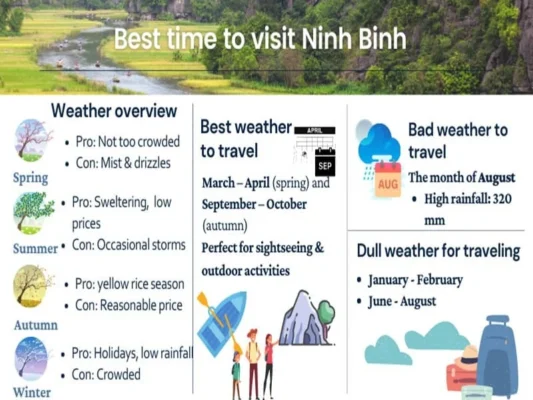
Best Time To Visit Ninh Binh
The best time to visit Ninh Binh largely depends on your preferences, but generally, the ideal months are from February to April and September to November.
- March to April: This period marks the spring season in Ninh Binh, characterized by mild temperatures ranging from 17°C to 25°C (63°F to 77°F). The weather is cool, and the landscape is vibrant with blooming flowers and lush greenery. This is also the time of the Hoa Lu Festival, a significant cultural event that offers a unique glimpse into the region’s traditions.
- September to November: Autumn in Ninh Binh is another excellent time to visit. During these months, temperatures range from 18°C to 28°C (64°F to 82°F), and the humidity is lower compared to the summer. The golden rice fields are a sight to behold, especially in late September and early October.
IV. Weather-Dependent Activities in Ninh Binh
1. Outdoor Activities
a. Boat Tours on the Rivers

Boat tour in Ninh Binh is an indispensable activity.
- Best Time: Spring (February to April) and Autumn (September to November) are the ideal seasons for boat tours due to the mild weather and clear skies.
- Popular Locations: Tam Coc, Trang An, and Van Long Nature Reserve.
- What to Expect: Visitors can enjoy serene boat rides through stunning limestone karst landscapes, lush green rice fields, and mysterious caves. The weather during these seasons ensures calm waters and comfortable temperatures, making the experience more enjoyable.
Let’s Discover Ninh Binh Day Trip from Hanoi for Best Experiences!
b. Hiking and Mountain Climbing
- Best Time: Autumn (September to November) is the best season for hiking and climbing in Ninh Binh. The cool and dry weather during this time offers perfect conditions for outdoor adventures.
- Popular Trails: Mua Cave (Hang Múa), Cuc Phuong National Park, and Bai Dinh Pagoda.
- What to Expect: Hikers can explore scenic trails, ascend to panoramic viewpoints, and discover ancient temples nestled in the mountains. Autumn’s clear skies provide breathtaking views of the surrounding landscapes, making the effort well worth it.
c. Cycling through the Countryside
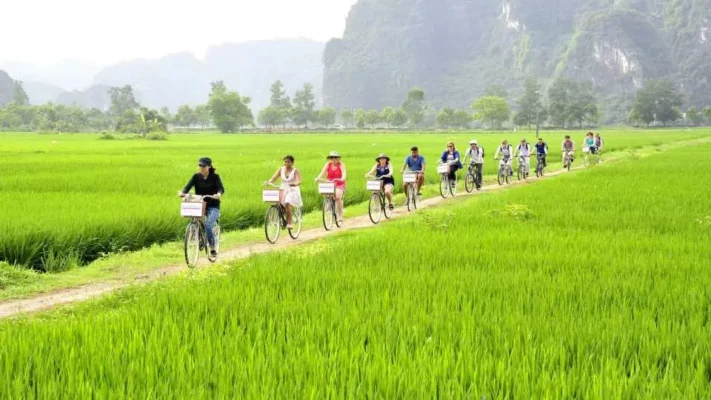
Cycling in Ninh Binh brings a sense of peace and relaxation.
- Best Time: Spring (February to April) and early Summer (May to June).
- Popular Routes: The rural roads around Tam Coc, Hoa Lu, and the Ninh Binh countryside.
- What to Expect: Cycling offers a peaceful way to explore Ninh Binh’s countryside, with its picturesque villages, vibrant rice paddies, and tranquil rivers. Spring is especially beautiful, with blooming flowers and lush greenery enhancing the scenic views.
d. Bird Watching
- Best Time: Late Autumn (October to November) and Winter (December to January).
- Popular Spots: Van Long Nature Reserve, Cuc Phuong National Park and Thung Nham Bird Garden.
- What to Expect: Birdwatching enthusiasts can witness a variety of migratory birds that flock to Ninh Binh during these months. The cooler weather of late autumn and winter creates an ideal environment for spending hours outdoors observing rare and exotic species.
Click here: Northern Vietnam Itinerary
2. Indoor Activities
a. Exploring Ancient Temples and Pagodas
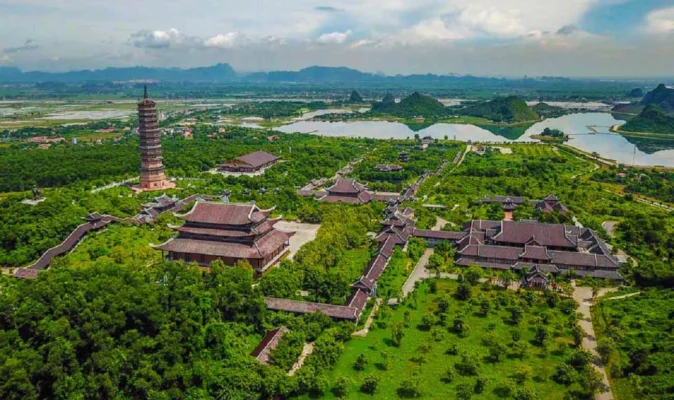
Bai Dinh Pagoda
- Suggested Locations: Bai Dinh Pagoda, Bich Dong Pagoda, and the temples of Hoa Lu Ancient Capital.
- What to Expect: These historical and religious sites provide an enriching cultural experience. Visitors can learn about the spiritual significance of the temples, explore ancient architecture, and enjoy peaceful moments of reflection indoors, away from the elements.
b. Visiting Museums and Cultural Centers
- Suggested Locations: The Ninh Binh Museum and local craft villages.
- What to Expect: Museums in Ninh Binh offer insights into the region’s history, culture, and traditions. Visitors can explore exhibits on local heritage, including ancient artifacts, traditional crafts, and historical displays. Craft villages offer hands-on experiences, such as pottery making, which are perfect for rainy days.
c. Enjoying Local Cuisine
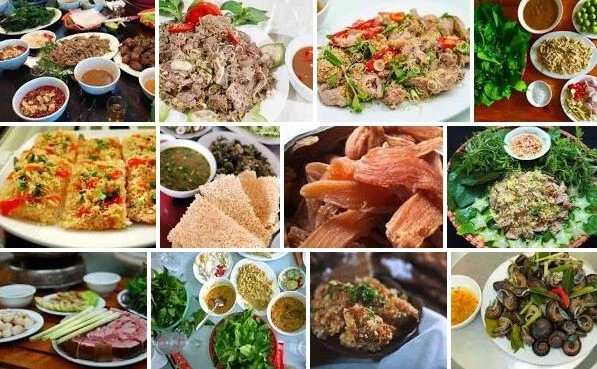
Ninh Binh has extremely diverse cuisine.
- Suggested Locations: Traditional restaurants and local eateries.
- What to Expect: Indulging in Ninh Binh’s cuisine is a delightful indoor activity. Visitors can sample local specialties like “com chay” (crispy rice), “nem Yen Mac” (fermented pork roll), and goat meat dishes, all while staying dry and warm inside cozy eateries.
Do not miss: Ninh Binh Cuisine
V. Festivals and Events by Season
Ninh Binh, with its rich cultural heritage, hosts a variety of festivals and events throughout the year, often influenced by the local weather and seasonal changes.
1. Spring (February to April)
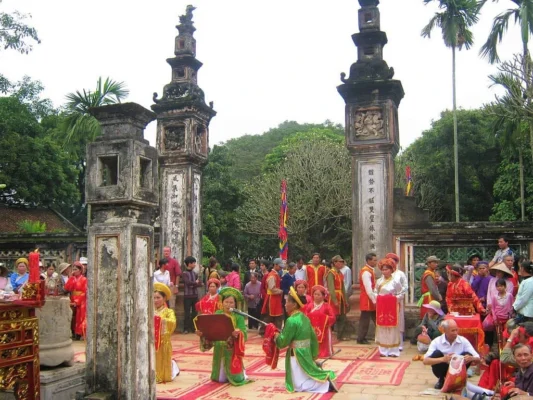
Hoa Lu Festival is the biggest festival in Ninh Binh held annually.
- Hoa Lu Festival: Held in late March or early April, this festival celebrates the ancient capital of Hoa Lu. The weather during this time is cool and mild, perfect for outdoor activities. The festival includes traditional games, boat races, and processions that highlight the region’s history and culture.
- Phu Day Festival: Taking place in April, this is a significant spiritual event held in the nearby Nam Dinh Province, but it draws many participants from Ninh Binh. The cool and pleasant spring weather enhances the experience of this vibrant festival dedicated to the Mother Goddess.
2. Summer (May to August)
- Truong Yen Festival: Occurring in late April or early May, this festival marks the beginning of the summer season. Despite the rising temperatures, locals and visitors alike participate in the festivities, which include traditional music, dance, and ceremonies honoring King Dinh Tien Hoang.
- Worshipping Festivals: Many villages in Ninh Binh hold their own worshipping festivals during the summer, where locals pray for good weather and bountiful harvests. These festivals often include offerings, performances, and feasts, providing insight into the agricultural culture of the region.
3. Autumn (September to November)
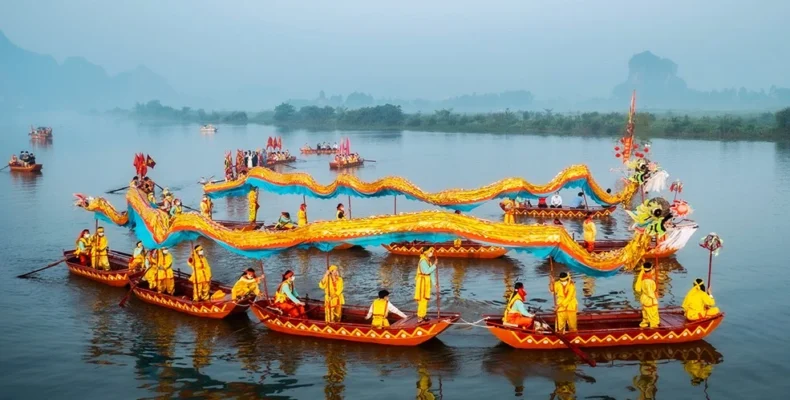
Traditional Boat Racing in Ninh Binh
- Mid-Autumn Festival: Celebrated in September, the Mid-Autumn Festival is a time for family reunions and traditional activities like mooncake making and lantern processions. The cooler, drier weather makes it an ideal time for both locals and tourists to enjoy the outdoor celebrations, especially in the countryside areas of Ninh Binh.
- Traditional Boat Racing: During the autumn season, especially around the Vietnamese National Day in September, local communities organize boat races on the rivers of Ninh Binh. The cool, crisp air and stunning autumn scenery make these events particularly enjoyable.
4. Winter (December to January)
- Christmas and New Year Celebrations: While not traditional Vietnamese festivals, Christmas and New Year have become more popular in urban areas like Ninh Binh City. The colder weather brings a festive atmosphere, with decorations, lights, and various public events.
- Tết (Lunar New Year) Preparations: As winter progresses, preparations for Tết, the most important festival in Vietnam, begin in earnest. The weather, though chilly, adds to the sense of anticipation, with markets bustling with activity and families preparing special foods and decorations.
In conclusion, Ninh Binh Weather varies significantly throughout the year, with each season offering unique experiences. Spring and autumn are ideal for comfortable sightseeing, with mild temperatures and pleasant conditions. Summer brings warmth and frequent rain, making the lush landscapes particularly vibrant, while winter offers cooler temperatures and a quieter atmosphere. By understanding these seasonal changes and preparing accordingly, travelers can make the most of their visit to Ninh Binh and fully enjoy its natural beauty and cultural attractions.
See more: Ninh Binh travel tips




